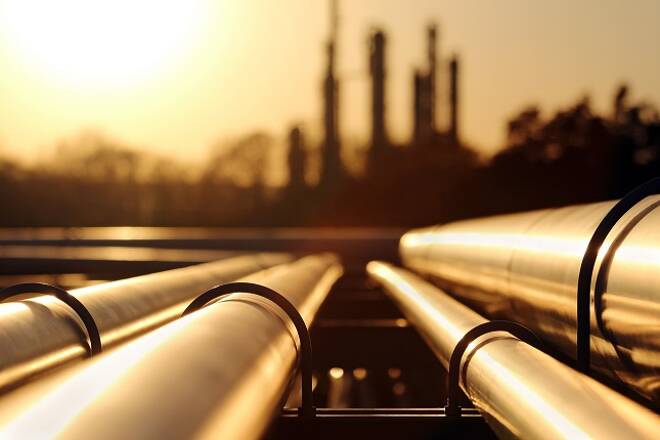Advertisement
Advertisement
Natural Gas Prices Dropped as Moderate Weather Should Allow for Injections
By:
Natural gas prices moved sideways on Tuesday, continuing to trade in an rebounding uptrend. Warmer than normal weather is forecast to cover most of the
Natural gas prices moved sideways on Tuesday, continuing to trade in an rebounding uptrend. Warmer than normal weather is forecast to cover most of the United States for the next 8-14 days according to the National Oceanic Atmospheric Administration. Warmer than normal weather should increase cooling demand.
Natural gas prices found support near an upward sloping trend line that comes in near 2.71. Resistance on natural gas is seen near the 10-day moving average at 2.76. Momentum is neutral as the MACD (moving average convergence divergence) histogram prints near the zero-index level with a flat trajectory which reflects consolidation.
Global trade in liquefied natural gas increased
Global trade in liquefied natural gas increased by 3.5 billion cubic feet per day to 38.2 Bcf per day in 2017, a 10% increase from 2016 and the largest annual increase in the history of LNG trade, according to the EIA who quotes a recently released 2018 Annual Report on LNG trade by the International Group of Liquefied Natural Gas Importers. In 2017, there were 19 LNG-exporting countries and 40 LNG-importing countries. Malta became the newest country to begin LNG imports in 2017.
Strong growth in LNG trade was supported by new liquefaction capacity commissioned in Australia, the United States, and Russia, which collectively added five new liquefaction trains. The world’s first floating liquefaction plant, Malaysia’s PFLNG Satu (0.2 Bcf/d capacity), was also commissioned in 2017.
The EIA said that Asia led the growth in global LNG imports, accounting for 74% of the increase in 2017, with 8 out of 10 LNG-importing countries registering the increase. China had the largest growth in LNG imports globally, an increase of 1.5 Bcf/d (46%) year on year. China became the world’s second largest LNG importer in 2017, overtaking South Korea, as government policies promoting coal-to-gas switching led to a record growth in natural gas imports. LNG imports also increased in Europe, primarily in southern Europe where a hot summer and lack of hydroelectric generation contributed to the increase.
About the Author
David Beckerauthor
David Becker focuses his attention on various consulting and portfolio management activities at Fortuity LLC, where he currently provides oversight for a multimillion-dollar portfolio consisting of commodities, debt, equities, real estate, and more.
Did you find this article useful?
Latest news and analysis
Advertisement
